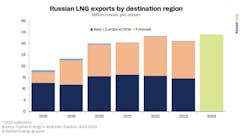Well, it was fun while it lasted-$3/Mcf gas, that is. Once Hurricane Bret proved to be a fizzle, spot gas prices slipped slightly below the magic mark again but have remained hovering just under that level.
Rest assured, however, that this isn't the last we've seen of $3/Mcf, and the next time we see it for an extended period-apart from the storm-induced spikes along the way-$3/Mcf might just prove to be the floor, not the ceiling.
All the signs are clear that the effects of reduced wellhead deliverability and accelerated decline rates (especially in the Gulf of Mexico) are having a significant impact on natural gas prices in the U.S.
Prices are getting a boost from the sizzling summer temperatures as well, but the rise in degree days probably would have been offset by increased imports of Canadian gas and improved performances by the nuclear and hydro sectors that have been evident this year. It is the slide in deliverability that has really made the difference, leaving gas inventory levels in a deficit position year-to-year vs. the year-to-year storage surplus that existed even at the height of last winter.
Various industry reports put U.S. gas production in the second quarter at about 50 bcfd, or 3-4% below year-ago levels. Despite a rebound in oil and gas prices and the concomitant boost in capital budgets, there is still a lag effect (not to mention the wariness of producers stung so recently by an unexpected price collapse) that will ensure deliverability will continue to decline this year and into the early part of 2000.
PaineWebber estimates U.S. production at 49.5 bcfd and Canadian imports at 9.6 bcfd in 2000, for a combined deliverability estimate of 59.1 bcfd next year. It calculates, conservatively, that demand will average 60.3 bcfd in 2000. So the market would continue to stay tight in 2000, especially if this winter features normal or colder-than-normal temperatures. There might be some fuel-switching to relieve some of this tightness, especially with surplus resid supplies in Asia, but continuing environmental pressures in the U.S. have helped the erosion of fuel-switchable power and heat capacity there.
Storage continues to be problematic, as weekly storage injections continue to lag year-ago levels. For the week ended Aug. 19, injections averaged about 50 bcf vs. levels of 60-75 bcf the preceding 3 years. That keeps the year-to-year deficit on a steady march upward after 3 consecutive weekly increases.
Will stepped-up drilling activity help stem the slide in deliverability? Remember the accelerated decline rates in the gulf? That means more wells are having to be drilled than before to provide the same level of deliverability as in the past. Even a sharp increase in drilling (and we are not seeing that sharp an increase in the rig count yet) won't bear fruit probably until next spring. While the U.S. active rig count has been climbing lately, it remains more than 120 units below year ago levels that were starting to get pretty anemic, anyway. Year to date, the U.S. rig count has averaged about 550-560, compared with almost 900 in 1998 and a little over 900 in 1997.
So PaineWebber has jacked up its forecast spot gas price for this year and next, predicting a composite spot price of $2.20 in 1999, next peaking at $2.80 in December. Again, storm activity in the gulf could hike those numbers, especially with temporary production outages causing a run on stocks. The analyst also sees spot gas averaging $2.40 in 2000, but with a range of $2.20-2.70.
Those predictions look really conservative next to those of CIBC, which is the leading bull on Wall Street regarding natural gas prices. At the end of the last heating season, the analyst boosted its average price assumption for 2000 to $2.75/Mcf, then quickly reassessed the situation and jumped it further to $/Mcf. CIBC expects gas prices to continue to strengthen over the next 3 quarters, driven by flat supply, strong demand, and relatively low storage levels at the end of first quarter 2000:
"Then the anticipation of yet another export pipeline (Alliance), to be built by the end of next year, should support gas prices through 2000 and beyond, despite a likely strong supply response next spring. Should a colder-than-normal winter occur this year, depleted North American storage facilities at the end of March 2000 will provide a healthy floor for North American gas prices, and therefore, the upward price momentum should continue unabated through winter 2000-01."
With those kind of fundamentals taking shape, even an unusually warm winter probably couldn't spur a collapse in gas markets. If the weather forecasters get it right this time around (third time's the charm?), $3 gas may just be the floor this winter after all.
Latest Prices as of September 1, 1999
null
null
null
null
null
*Futures price, next month delivery. #Spot price.

